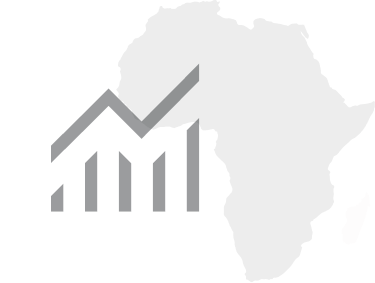Debunking the narrative on African migrations: my experience of the 2019 Ibrahim Governance Weekend
24 April, 2019
The opinions expressed in this article are solely those of the author, and do not necessarily reflect the opinions or views of the Mo Ibrahim Foundation.
African migrations is a highly topical issue that often makes global news headlines. Correspondences on this subject tend to report that migration flows largely from Africa to Europe and North America. It is true that there has been such migrations but contemporary data on African migrations tell a different story. As highlighted in the 2019 Ibrahim Forum Report titled Africa’s Youth: Jobs or Migration?, around 70% of sub-Saharan-African migrants stay within the continent. In 2017, African migrations represented around 14% of the global migrant population; much less than Asia’s and Europe’s share (41% and 24% respectively).
Whereas African governments have largely been receptive of migrants, some countries in the North have increasingly not been through recent developments of inward-looking practices and policies on migration. How do we change this narrative to support unbiased migrations? Leadership is one answer to this question provided by the Now Generation Forum at the 2019 Ibrahim Governance Weekend (IGW). This event gathered delegates from all over the world to discuss African migrations. I was among them, representing Restless Development.
So why do Africans, particularly youth, migrate?
It was laid out that most young people migrate in search of better economic and social prospects. Other reasons include: an enabling business environment; peace and security (although insecurity is not the major factor for Africa migrations); and a more stable climate. Noting that these reasons include push and pull factors, this blog will ponder on push factors for youth migration. It is also worth noting that young peoples' experiences and reasons for migrating are not homogeneous.
Despite many African economies recording increasing levels of GDP, these benefits have not trickled down to a large proportion of the continent’s youth population. The 2019 Ibrahim Forum Report shows that while 18 million jobs need to be created annually to absorb new entrants into the labour market in sub-Saharan Africa, only 3 million jobs are actually being created. Through discussions at the IGW, it was also revealed that some African governments are reluctant to allow free movement of goods and services within the continent. Aliko Dangote, one of the biggest investors in Africa, gave an example of how such restrictions had affected his ability to export cement to certain countries. Openness to such movements could create millions of jobs for the youth of recipient countries. Alongside improvements in infrastructure and other macroeconomics, it remains imperative for African governments to improve management of private and public sectors leading to a more conducive environment to do business, more jobs in the short-term, and attraction of foreign talents.
Beyond direct economic reasons, peace and climate change are also push factors. In countries such as Sudan, civil war has led to forced migrations. Similarly, climate change effects on agriculture have pushed many Africans from rural areas to migrate. Changes in weather conditions that have affected farming seasons have posed a threat to the livelihoods of Africans who are dependent on farming for subsistence and commercial purposes. As highlighted by Amina Mohammed, Deputy Secretary General of the United Nations, there is a need to harness technology in practising smart agriculture that will be less harmful to the environment.
Africa’s growing youth population was discussed throughout the weekend. One of the biggest challenges faced by young people on the continent is a lack of job prospects.
It was acknowledged that the prevalent high fertility rates linked to cultural, socio-economic and religious reasons contribute to such a youth bulge. Many efforts have been made by advocates for family planning to encourage families to better space their children. However, it is important for families to manage their number of children in relation income. Therefore, it is necessary to address these challenges through interventions such as increasing access to contraceptives particularly in rural areas.
Is migration harmful to recipient countries?
While proponents of inward-looking migration practices may agree that it is harmful, it is worth answering this question from a liberal perspective. Countries that are receptive of migrants tend to experience a positive impact.
The Ibrahim Forum Report shows that Côte d'Ivoire (which receives the second largest share of migrants on the continent) saw an estimated contribution of 19% to its local GDP from migrants. Rwanda, the most welcoming country to migrants on the continent, saw a 13% contribution to its GDP.
Consequences of the narrative on African migrations present a stark contrast between the United Nation’s Global Compact for Safe, Orderly and Regular Migration (GCM), and the African Union’s Common African Position (CAP) on the Global Compact. Whereas the CAP is open to migrations within and outside the continent, GCM appears to be inward-looking through proposing stricter border controls on mainly forced migrants. This approach is more likely to deny economic benefits of migration to transit and destination countries and could lead to consequences of human trafficking. A better harmonisation is needed between the two to ensure that they have a viable intersection.


